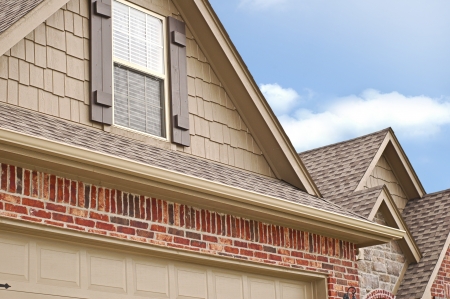Everyone knows that you should have a home inspection performed on a house you wish to buy. A professional home inspector will outline any problems or repairs that need to be made so you can negotiate a price accordingly and finalize the real estate transaction with peace of mind. But when it comes to the inspection of the roof, what exactly is a home inspector look at?
There are two basic types of roofs, pitched and flat. A pitched roof is normally built of a wood framework of beams joined at the top at an angle, a deck usually made up of plywood and a weather resistant cover. The singles (cover) are the one layer that keep your roof dry so they must be intact in order to protect against the elements such as rain, snow and hail.
A professional home inspector will first do a cursory visual inspection of the roof. He will when go up on the roof to look for uneven shingles or a poor new shingles installation over old ones. Installing new shingles over old ones is not necessary a problem, as long as the work is done correctly. The home inspector will also check for sagging which could be caused by a damaged deck or a potentially more serious structural issue with one of the ridge beams. Any pealing, cracking or breakage of the shingles will be noted on the inspection report.
An inspection of the attic will also be made to ensure that there is no water damage on the underside of the deck which would indicate water leakage. The home inspector will also look for appropriate roof ventilation. He will count the number of vents and the soffit and their overall placement to confirm that there is adequate ventilation. Warm air must be allowed to escape the attic to avoid moisture build-up and ultimately rot.
In the case of a flat roof, a professional inspector will verify all the same elements as for a pitched roof with the addition of water pooling. The main difference between a flat and a pitched roof is that the flat roof is built to be water tight whereas the pitched roof is meant to have the water run off its sides. A flat roof should not have any ponds of standing water as it can breed insects and plants, which can ultimately damage the roof. With a flat roof, the inspector will look for any weak spots, visible cracks, blisters or corrosion which could compromise the integrity of the roof. Tracing the source of water damage from a flat roof may be more difficult as it may have started in one place but when zigzagged away and created damage somewhere else.
Before you buy a new home, have it inspected by a professional. This will give you not only peace of mind about any major structural or mechanical issues the home may have but it will also educate you as what areas of house will need attention in the near future. Such as the roof.

